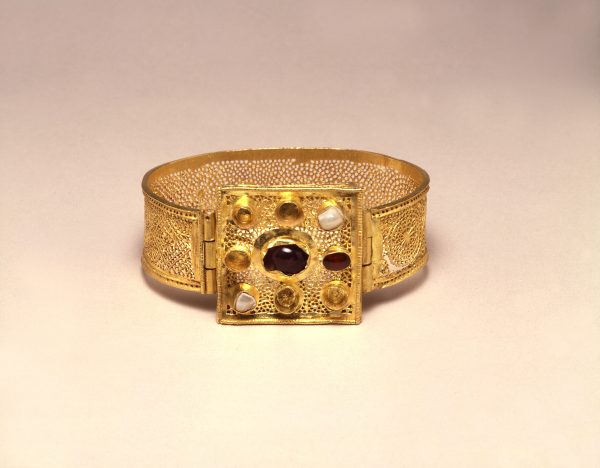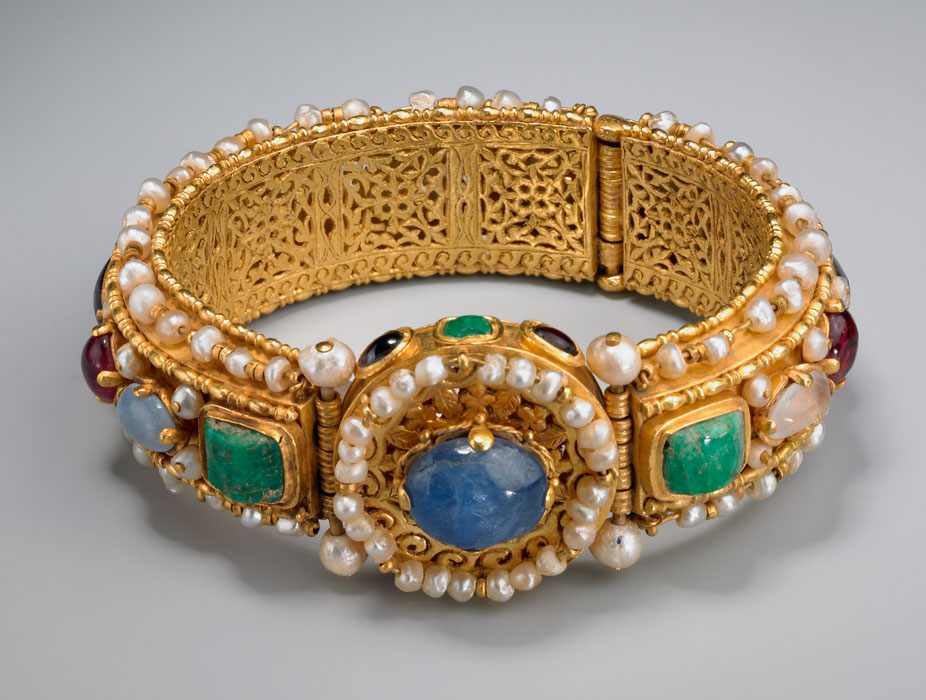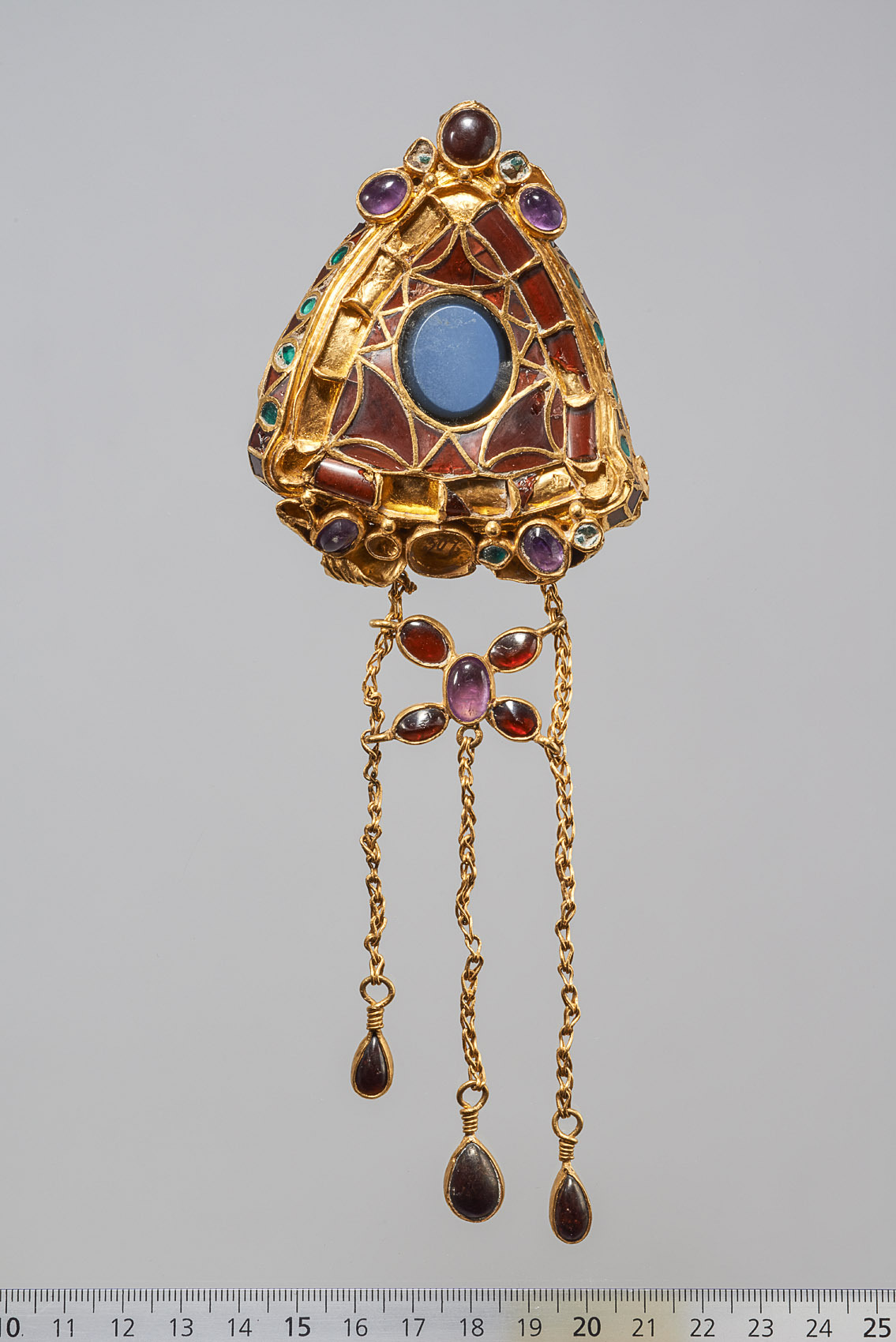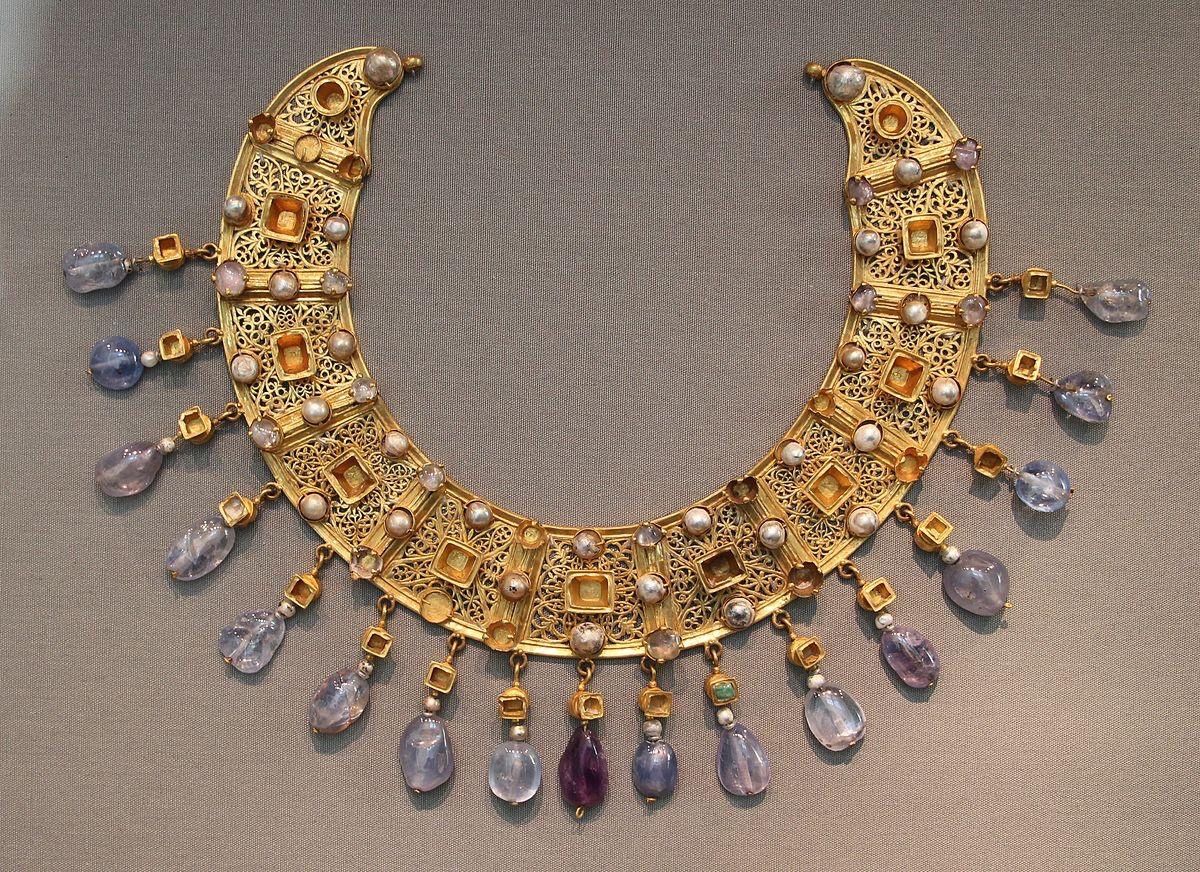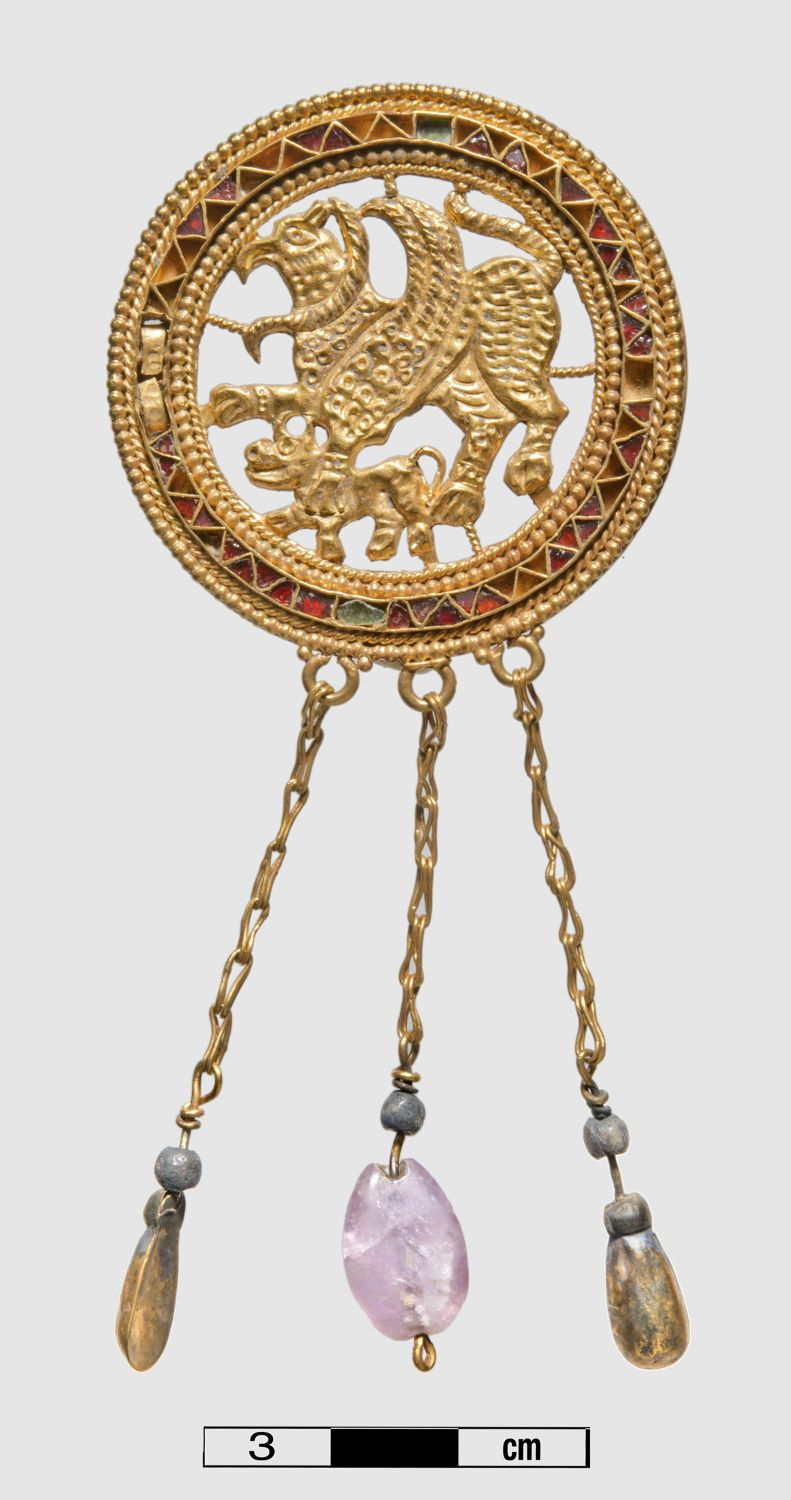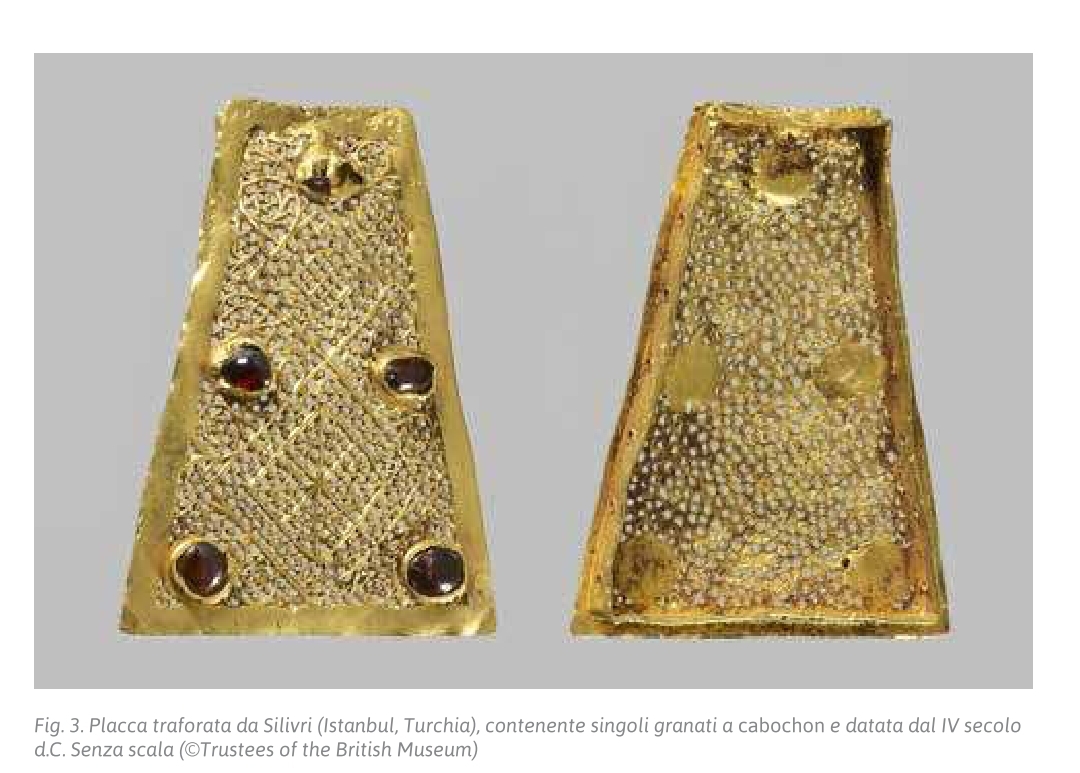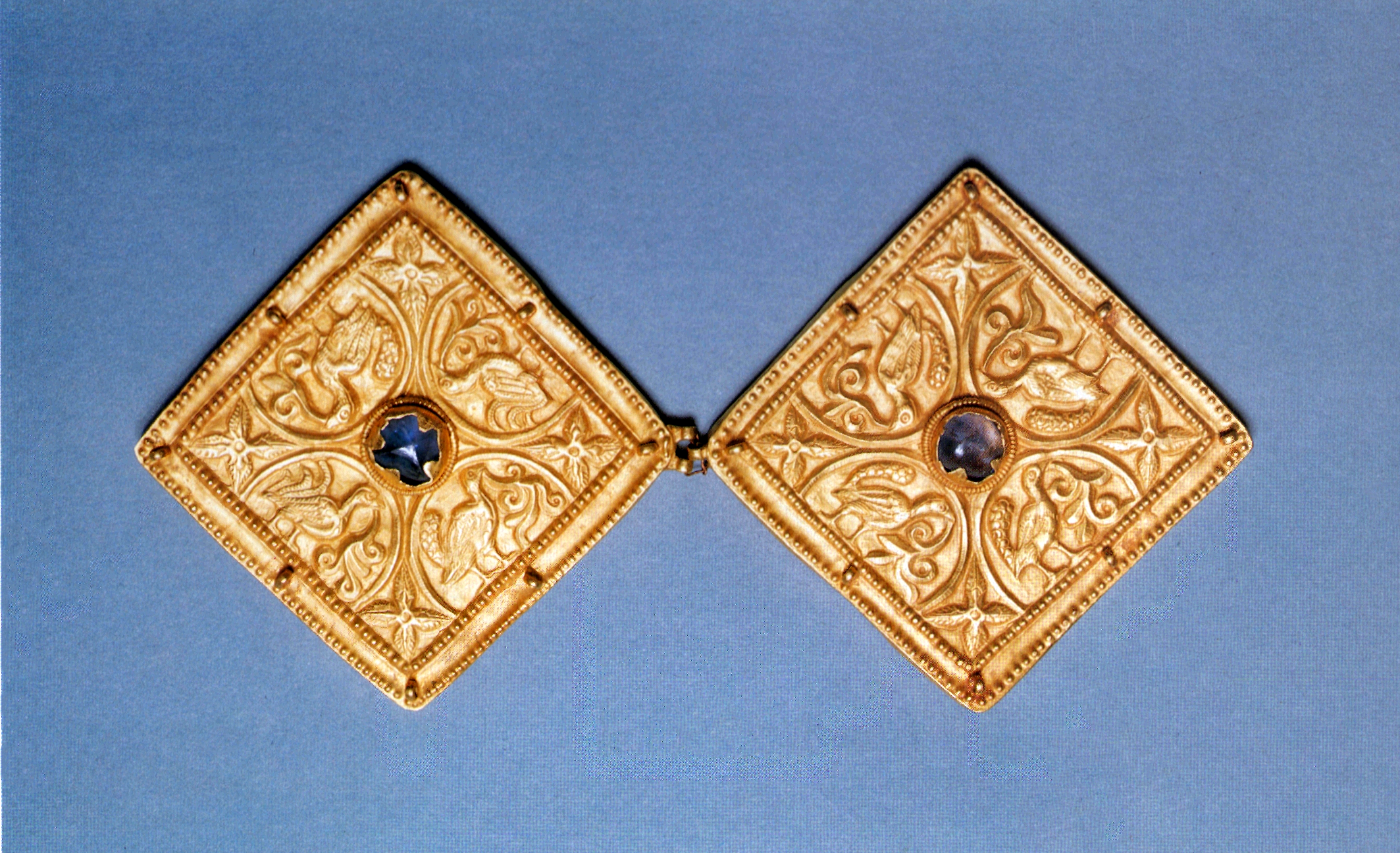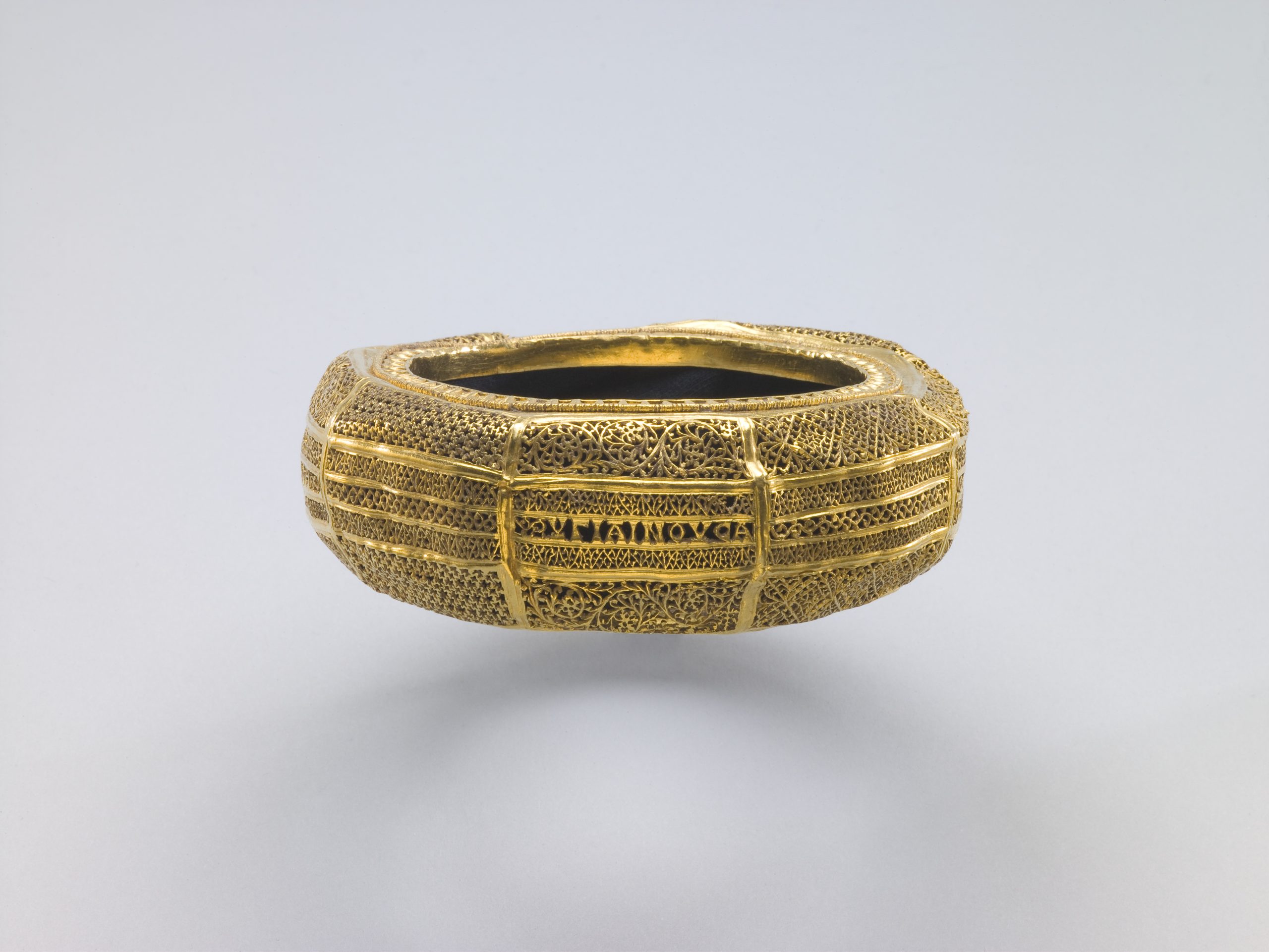Tools from the jewelry workshop that were found during construction of the subway in Thessaloniki: “these were the shops and workshops of the city’s byzantine Agora (marketplace), which produced jewellery, metal and glassware, pottery, etc. kilns for melting raw materials and firing finished products, workbenches and tools, moulds for jewellery-making, semi-finished ceramics and tripod stilts attest to the productive nature of these premises throughout the entire byzantine period. […] there were also jewellers’ workshops on both sides of the road from at least the 10th century, as shown by finds including conical vessels for melting small quantities of metal, as well as a small quantity of the mercury necessary for metal-working and intact globular vessels with thick walls and a small spout for storing it in. A fair number of plaquettes from stone moulds used for making jewellery were also found.” [Tzeni Veleni, Yannis Mylopoulos]
Mercury was used for gilding [info here]
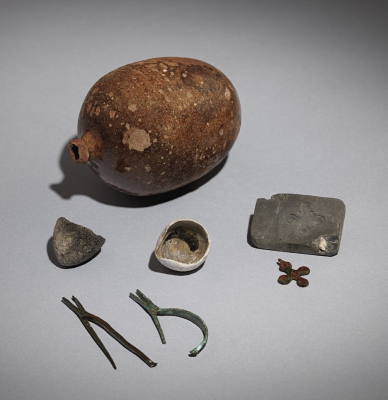
Photo after Tzeni Veleni, Yannis Mylopoulos
“Small vessels for use in workshops to smelt metals, a globular glazed vessel with a small spout for storing mercury which was essential to separate out metals, a mould for making crosses and bronze tools and tongs were among the equipment from metal working and jewellery workshops found in Thessaloniki’s Byzantine Agora (Marketplace), discovered at two stations in the historical centre on either side of the central road which was known as the Leoforos” [Tzeni Veleni, Yannis Mylopoulos]
During the excavation there were found the conical vessels made of ash clay with a small triangular projecting rim. They were used for melting a small amount of metal. Remains of the copper are present inside the containers, while the outer surface has acquired a violet vitrification due to the high temperature.
Tiles (lobes) of the stone molds for jewelry belonging to six different molds are made of graphite schist which is resistant to high temperatures, only one is made of rose-red gneiss. Most were found in the 10th century stratum. “Almost all tiles come from closed dies, as they have small hoppers around their circumference for filling them with liquid metal. The tiles are fastened together with pencil pegs inserted into holes drilled in their corners. Of particular interest are two of the dies that were used for the manufacture of the ornaments with joints. The first tile belongs to a double die and has metal remains on its surface. It was used for the construction of a crescent-shaped unit with a wavy upper edge and a decoration on the surface of the semicircle of two facing birds with raised wings.
The second tile belongs to a multiple matrix (at least tripartite). It retains incised impressions of jewels on both sides: on one side it bears an impression of a crescent unit with circles and a disk, and on the other an impression of its suspension stem and a bead-like element. Therefore, in the jewelry manufacturing workshops operating in Thessaloniki during the 10th century, crescent earrings were produced, of a type particularly popular in the Byzantine world from where it spread to the Arabs and the Slavs.” [Stella Vasileiadou]
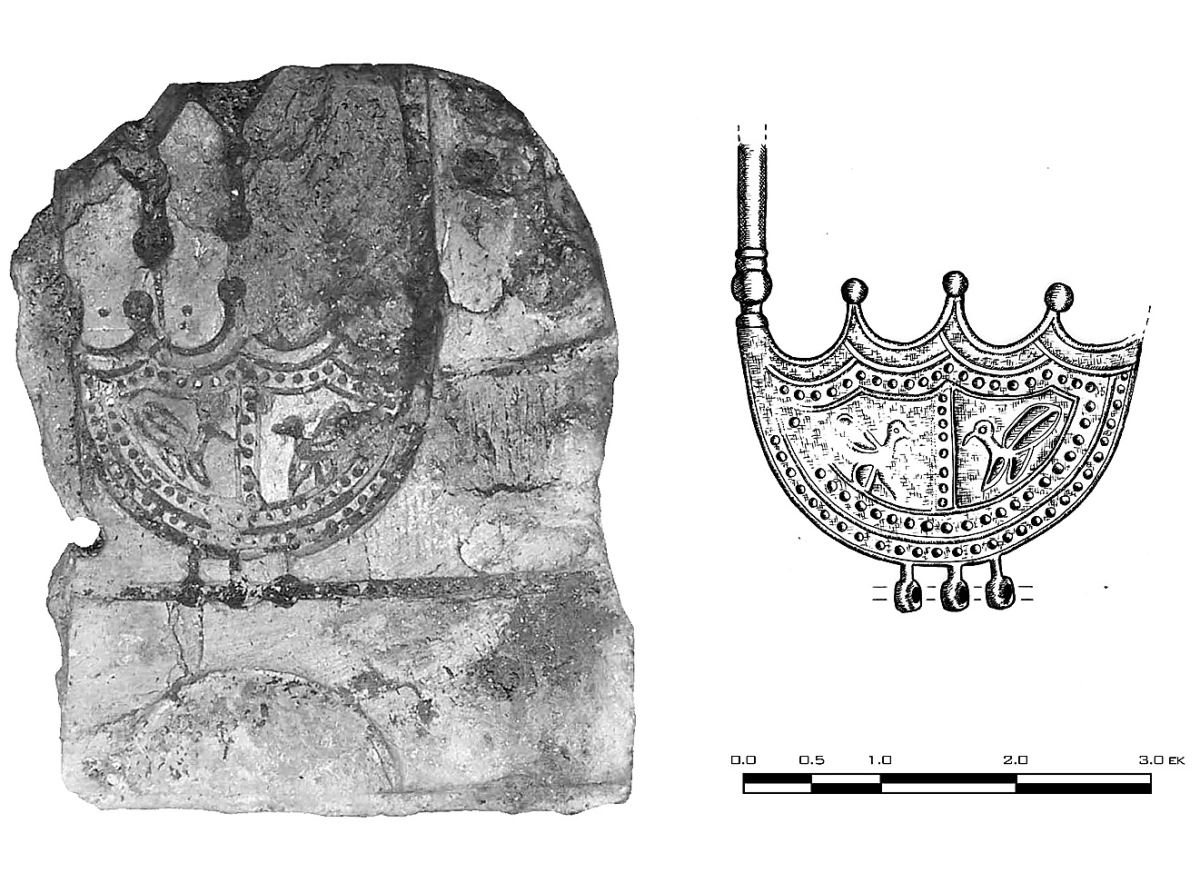
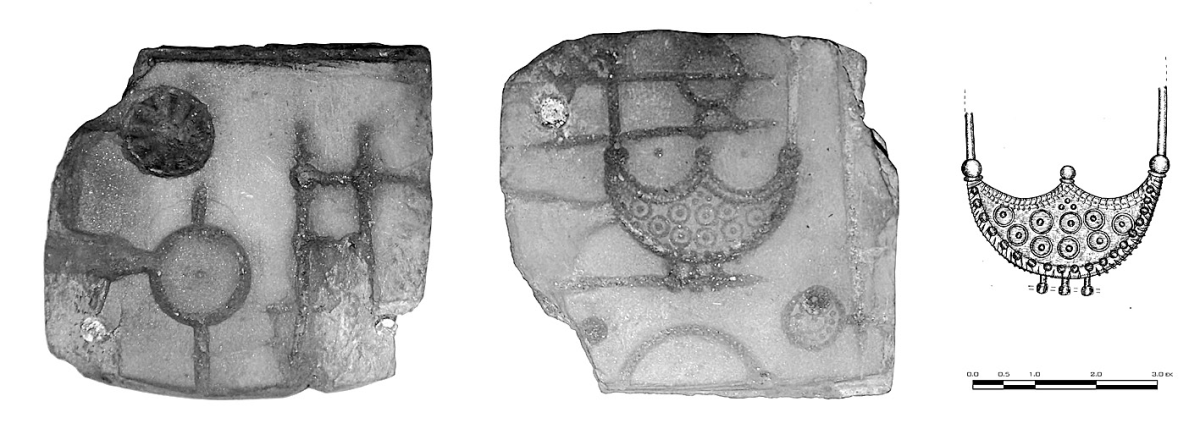
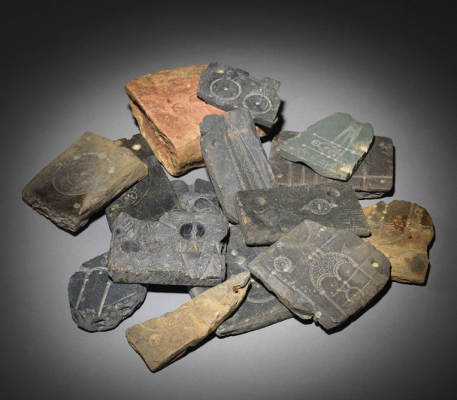
Photo after Tzeni Veleni, Yannis Mylopoulos
“Plates from mid-Byzantine jewellery moulds (10th-12th centuries) with the imprint of the jewellery to be made carved into one or both of the surfaces (earrings, buckles, clasps, beads of necklaces, etc.). The moulds were usually made of graphite schist, or other rocks, though that is rarer.
The plates were bound together in twos or threes by lead pins and the liquid metal was injected via conical openings.” [Tzeni Veleni, Yannis Mylopoulos]
“An abundance of small objects and pieces of jewellery, including pectoral crosses of various types and reliquary crosses (encolpia), glass and bronze bracelets, bronze and, more rarely, silver rings, attest to the commercial nature of the district down the centuries, especially for gold- and silverwork. At the same time, the presence of jewellers’ moulds, small metal-working vessels and some mercury, used in metal-processing, tells us that the jewellery sold in the marketplace was made in workshops on the spot” [Tzeni Veleni, Yannis Mylopoulos]
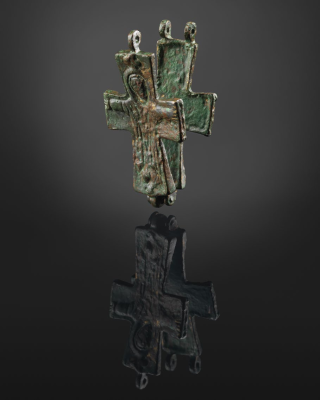
Photo after Tzeni Veleni, Yannis Mylopoulos
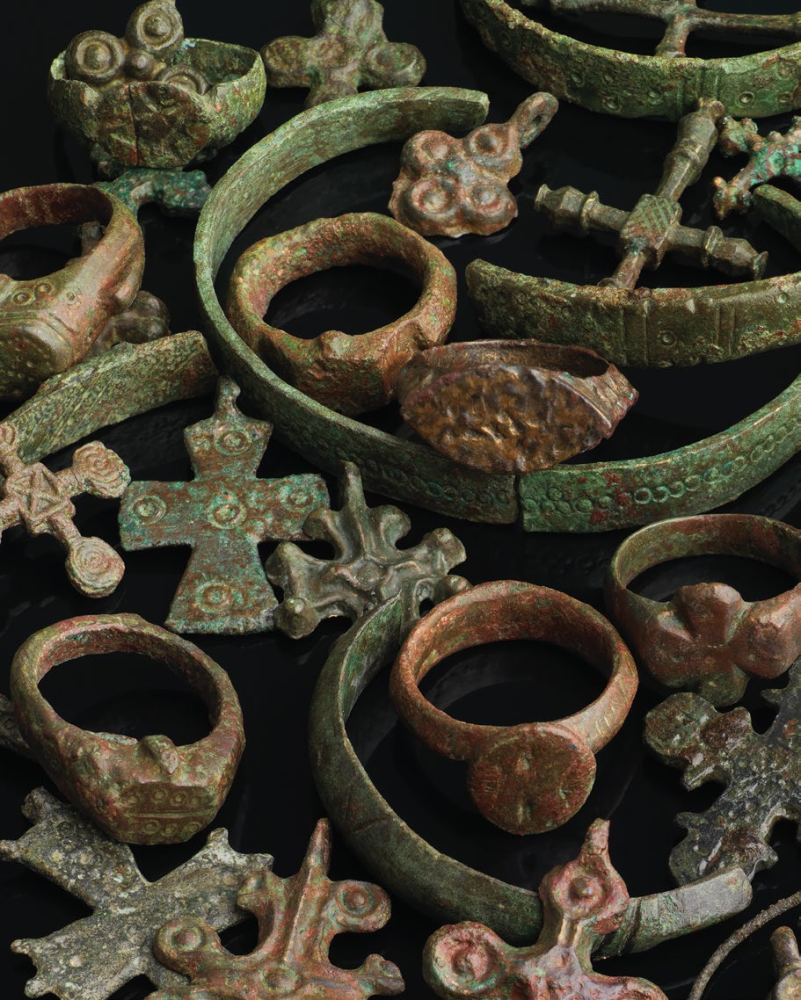

“Bronze pectoral crosses, earrings, bracelets and rings from the mid Byzantine period (10th-12th centuries) found at Venizelou Station. They were were made at the workshops located on either side of the Byzantine city’s central road known as Leoforos, and were sold on benches under makeshift awnings outside the front of the shops. The number of pieces of jewelry testified to the existence of a handicraft industry here and an organised market in gold and silver ware; a tradition which continues to this day.” [Tzeni Veleni, Yannis Mylopoulos]
- Μετρό-ντας την Ιστορία της Θεσσαλονίκης The Metro-nome of Thessaloniki’s History [2018],
Tzeni Veleni, Yannis Mylopoulos https://www.academia.edu - Εργαστήρια …εἰς τήν γειτονίαν τῆς ὑπεραγίας Θεοτόκου (9ος-12ος αι.): από τις ανασκαφές του Σταθμού Αγίας Σοφίας ΜΕΤΡΟ Θεσσαλονίκης [Middle-Byzantine workshops in the neighborhood of the Holy Theotokos (Acheiropoietos): from the excavations at Hagia Sophia Station of the Thessaloniki Metro], Stella Vasileiadou https://www.academia.edu
For the crescent-shaped earrings read:
- Late Byzantine Jewellery from Thessaloniki and its Region: The Finds from Ippodromiou 1 Street and Other Excavations
Tassos Antonaras https://www.academia.edu - HALF-CRESCENT EARRINGS IN SICILY AND SOUTHERN ITALY; Isabella Baldini https://www.academia.edu
- Elegance Over the Borders: The Evidence of Middle Byzantine Earrings; Jenny Albani https://www.academia.edu
- Crescent–shaped Earrings with Lower Ornamental Band; LANGO PETER https://www.academia.edu

